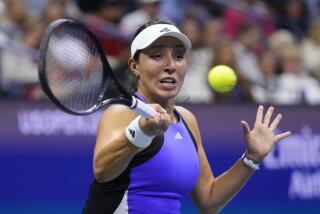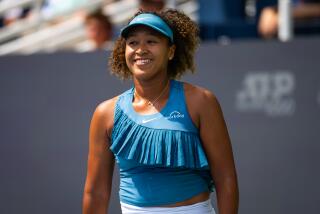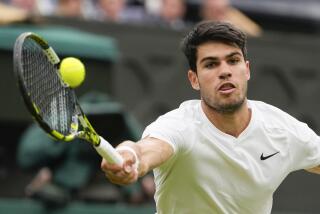Column: Serena Williams’ once inevitable march to Grand Slams record now far from guaranteed
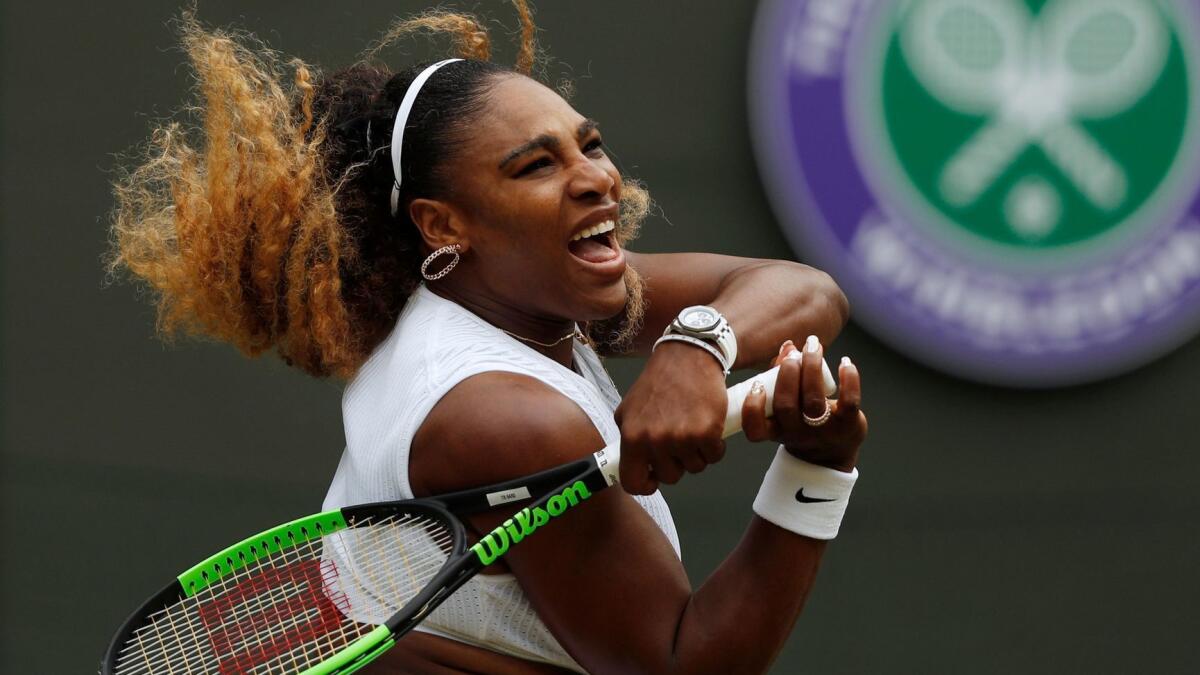
- Share via
NEW YORK — Serena Williams has finally encountered an opponent she can’t outhit or overpower.
Williams, soon to be 38, can still defeat the kids who grew up idolizing her. She can still put together enough solid matches to go deep into tournaments, reaching three Grand Slam finals since she returned to competition in 2018 after enduring ghastly complications related to the birth of her daughter Olympia, who will be 2 on Sept. 1.
But Williams hasn’t gained ground in her pursuit of Margaret Court’s record of 24 Grand Slam singles titles, remaining one short. What once seemed inevitable is now a battle against time.
Williams lost each of those three finals in straight sets, most recently at Wimbledon this year despite being gifted an easy draw until she faced a supernaturally sharp Simona Halep. Her progress was interrupted this spring by a knee injury that led her to retire from a third-round match at Indian Wells and pull out of tournaments at Miami and Rome. It was halted again this month when back spasms caused her to retire during the Rogers Cup final at Toronto and miss a tournament at Cincinnati. Time spent in recovery gives her less time to sharpen her legendary match toughness. Age and its evil pal injury have become her biggest adversaries.

Williams is seeded No. 8 at the U.S. Open, site of six of her Slam singles titles. It’s also the scene of her meltdown in last year’s final, triggered by chair umpire Carlos Ramos’ warning her for being illegally coached. She called Ramos a liar and a thief and smashed her racket, losing a point and a game. She won the crowd’s favor but overshadowed what should have been a special occasion for sobbing winner Naomi Osaka. Williams later apologized but the moment was lost for Osaka, the No. 1 seed this year.
It’s possible Williams, who opens play Monday against world No. 87 Maria Sharapova, can tie Court’s mark here. But it’s far from certain.
“If you’d asked me a year ago, I would have said yes, and you ask me now and I’m getting really uncomfortable with whether or not she can do it. And that’s based on seeing the last five majors and just seeing that I don’t feel like she’s getting in better shape, and knowing the time clock,” Pam Shriver, the 21-time Grand Slam doubles champion turned ESPN commentator, said in a phone conversation. “With each passing major, I just get more and more uncomfortable.”
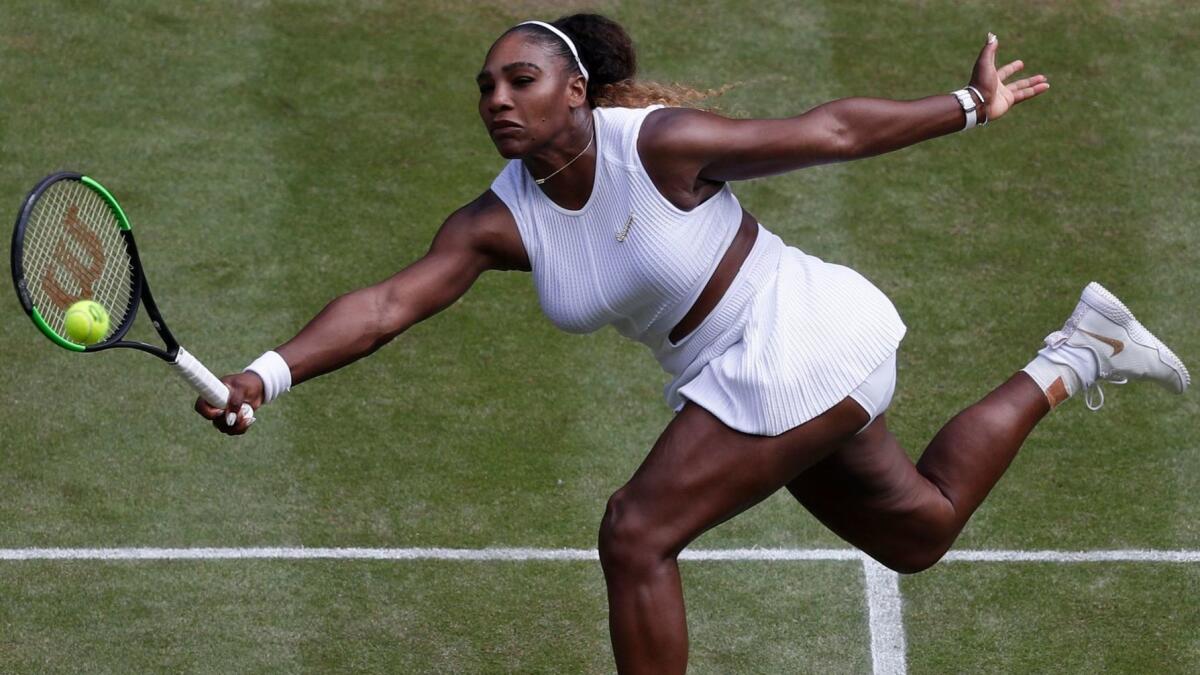
Williams’ best shots at No. 24 were at Wimbledon. She has won more than 88% of her career matches on grass, but Angelique Kerber beat her 6-3, 6-3 in 2018 and Halep dominated her 6-2, 6-2 in 56 minutes this year. She wasted another potential chance at this year’s Australian Open when she couldn’t close out her quarterfinal against Karolina Pliskova after taking a 5-1 lead in the third set. Williams rolled her ankle in the final set but later said it wasn’t the reason she lost.
Her uncharacteristic slip fed Shriver’s doubts. “Losing from a lead that she’d never lost from before,” Shriver said. “So it makes me uneasy right now.
“It isn’t as easy to win in a major final as it was. But there’s only one other person that’s gotten to 23, man or woman, and that’s Margaret Court. So it’s going to be fascinating to see. I don’t feel like she’s had enough time, though, to get in the kind of shape she needs to get into. So maybe if it doesn’t happen — and I don’t think it will — at the U.S. Open, I think she has enough time to get in next-level shape to make another run. I think her last year to make a really good run at it, if she doesn’t get it this year, is next year.”
“I still feel, though, she has the highest ceiling of all the players and at her best, she’s better than everyone. Can she do that for seven matches? That’s the real question.”
— Chris Evert, tennis champion and ESPN commentator
Shriver isn’t alone in that thought. Eighteen-time Grand Slam winner Chris Evert, also part of ESPN’s coverage, initially said during a conference call she believes Williams can tie Court here if Williams is healthy. After reconsideration, Evert tempered her optimism.
“The one added component that she has now that I probably overlook is … age and injuries. Even though she looks unbelievable when she plays, to play like that for seven matches is a tough task to ask a 38-year-old, very much like a Roger Federer. It’s tough to ask of him,” Evert said.
“I still feel, though, she has the highest ceiling of all the players and, at her best, she’s better than everyone. Can she do that for seven matches? That’s the real question. I think her opportunities are running out and I think this and maybe the [next] Australian Open could be the last two. Maybe she has two or three more Grand Slams and that’s it.”
Barring a new or reawakened injury, Williams should beat five-time Slam winner Sharapova, who has struggled since returning from a 15-month suspension for using the banned drug meldonium. Their match is being hyped as a rivalry, but it’s not: Williams has won 19 of their 22 matches, including the last 18 they’ve played. It’s intriguing, though. “Of course, I’m going to watch it. I know you all are going to watch it,” Osaka told reporters last Friday. “I think everyone in New York is going to watch it.”
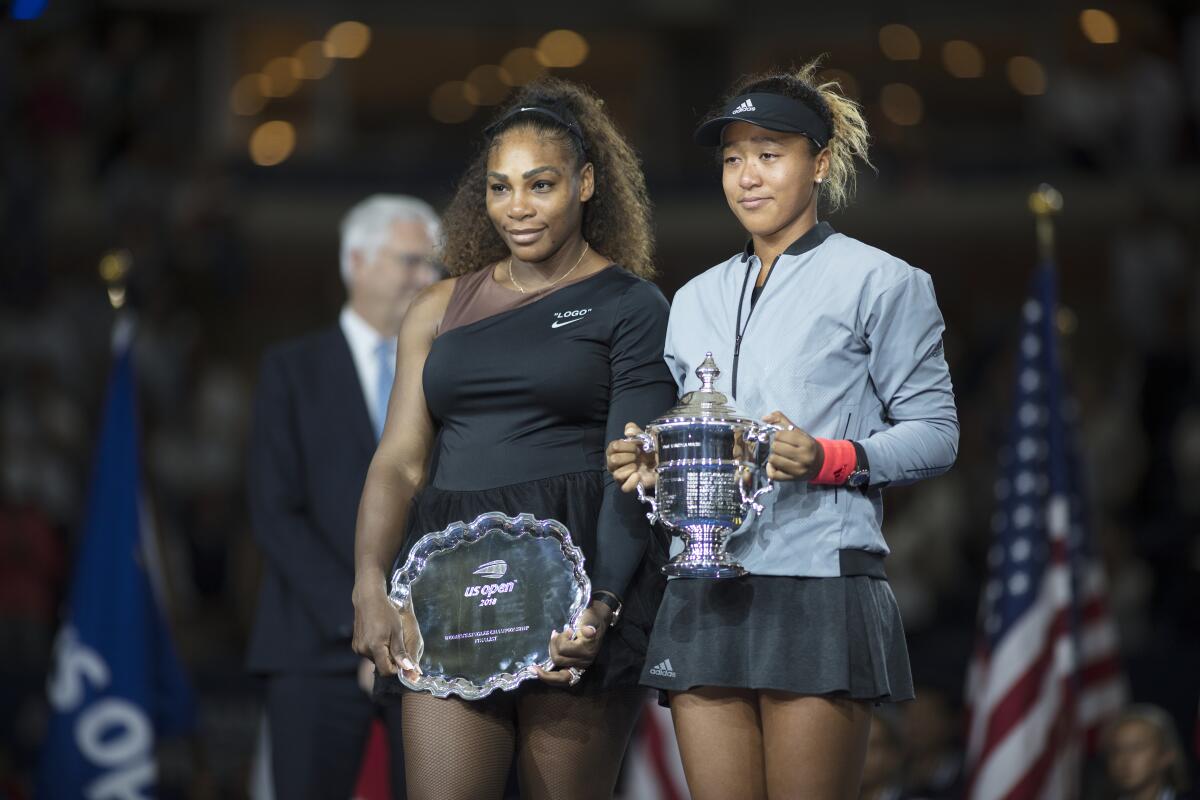
Osaka has had her own challenges since she followed her U.S. Open victory by winning the Australian Open. She, surprisingly, dumped coach Sascha Bajin in February and hired Jermaine Jenkins, a former hitting partner of Venus Williams. Osaka lost in the third round at the French Open and first round at Wimbledon and retired during a quarterfinal match at Cincinnati because of a painful left knee but said her knee was better. “I’m not sure if it’s because the last couple of months have been kind of turbulent, but definitely I feel really comfortable and I know that, despite everything, I play well here every year,” she said.
American teenager Amanda Anisimova, 24th in the world, withdrew from the Open after the death of her father and coach, Konstantin, and French Open runner-up Marketa Vondrousova of the Czech Republic withdrew because of a wrist injury. No. 2 seed and French Open champion Ashleigh Barty should be in the mix, along with Indian Wells and Canadian Open winner Bianca Andreescu and No. 4 seed Halep, who exited in the first round each of the last two years.
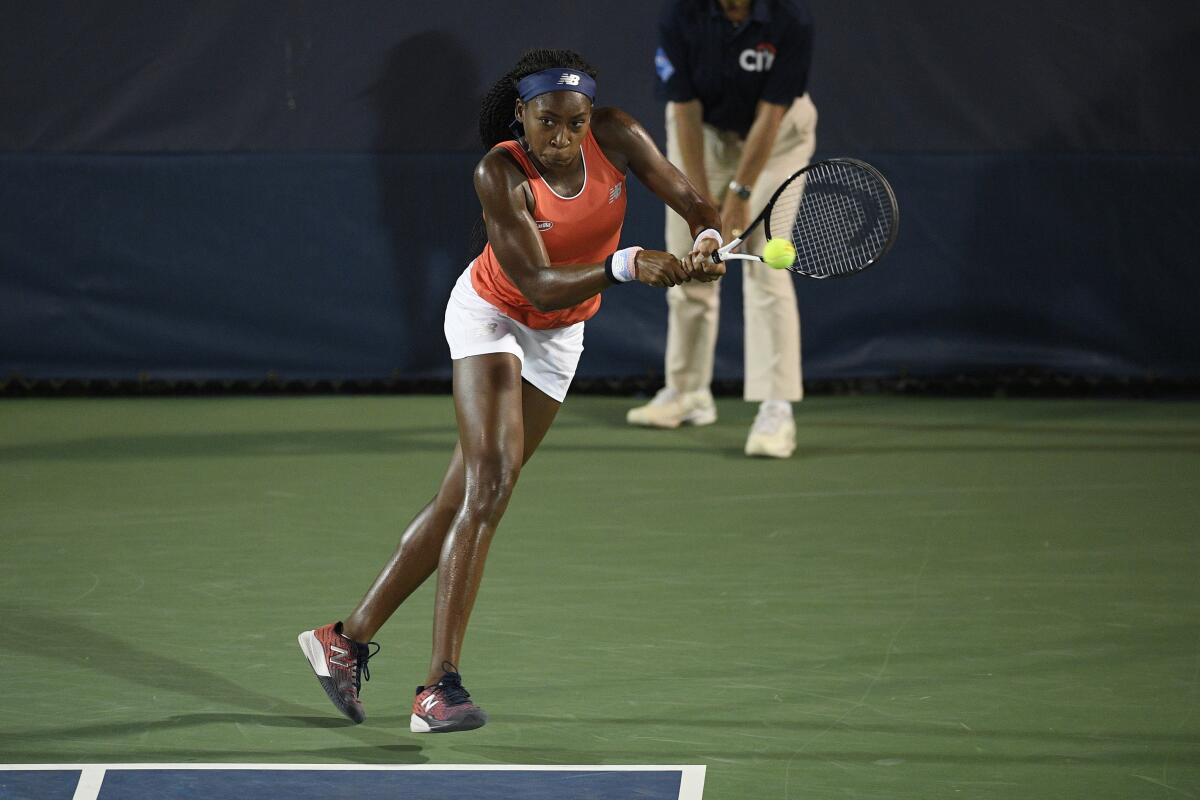
Madison Keys, the 2017 runner-up, opened eyes by beating four Grand Slam winners to prevail at Cincinnati last week. She’s seeded 10th, a spot ahead of 2017 winner Sloane Stephens, who returned to coach Kamau Murray after a split.
Coco Gauff, the 15-year-old from Florida who got to the fourth round at Wimbledon, will face high expectations for the first time. “She kind of has that competitiveness that she’s not going to choke, get that tight. I think she’s going to be very, very composed in the future,” Evert said.
Gauff’s future is unlimited. Serena Williams has a short horizon. Even the greatest women’s tennis player isn’t immune to the toll of time. A lot will have to go right for her — probably too much — for her to stop the clock in New York.
More to Read
Go beyond the scoreboard
Get the latest on L.A.'s teams in the daily Sports Report newsletter.
You may occasionally receive promotional content from the Los Angeles Times.

